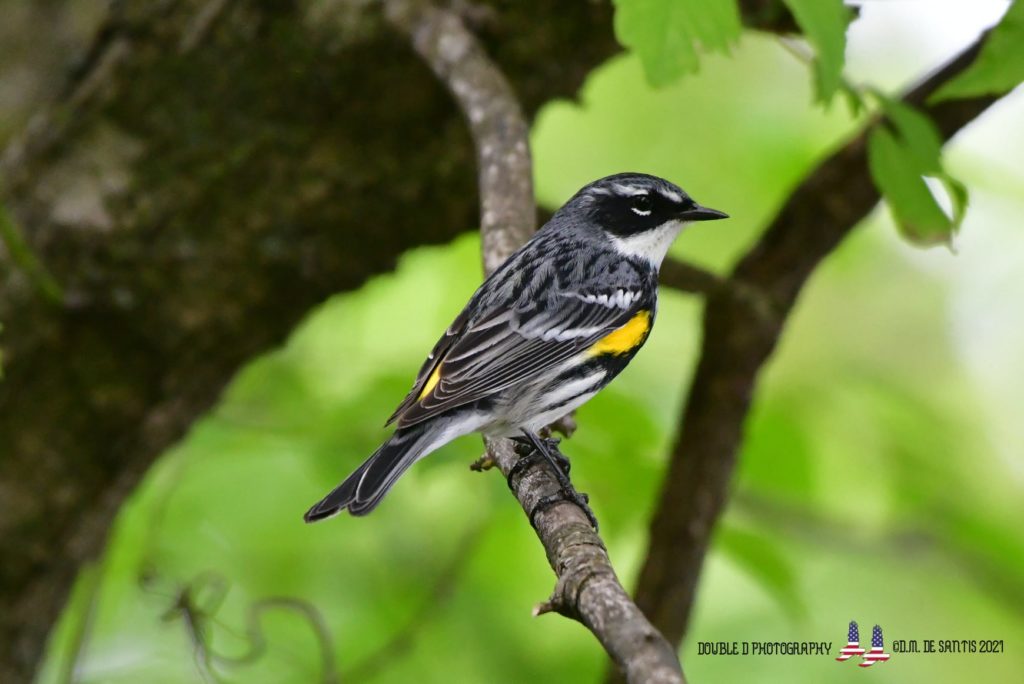
On a recent beautiful October morning I strolled around our Bergen County Audubon Society Butterfly Garden at Overpeck Park. But this time not with a shovel or butterfly guide, not even with a watering can or a new wildflower to plant. Among the fallen leaves, autumn sun and subdued but still magnificent colors, I was going butterfly garden birding.
One of the first things I learned about restoring native butterfly habitat is that birds don’t read signs very well. Despite all the plaques proclaiming a garden to be for Butterflies, Monarch weight stations or even a pollinator garden our birds know a good thing when they see one and utilize our native gardens just as much as our butterflies do ,whether they are in places like the Meadowlands or our very own backyards.
At a time of year when we think we are putting our butterfly gardens to bed and focusing our attentions elsewhere migratory birds are taking over our gardens occupied only a few weeks ago by Swallowtails, Skippers and Monarchs.
The nectar in our butterfly gardens for the most part are long gone now as our butterflies prepare their life cycle for the far-off coming spring. Now the fall browns, reds and golds substitute the brilliant colors of summer. But make no mistake: those hues of the fall butterfly garden signal survival to many migratory birds that will now depend on them through the coming hard winter.

Native wild flowers like Joe-pye, Ironweed and Goldenrod now provide seeds and insects to many Sparrow species like Swamp sparrows, White-Throats, Towhees and Junco. The asters, sunflowers and milkweeds that gave life to Monarchs and Swallowtails now pass on that gift to Ruby-crowned Kinglets, Yellow-rumped Warblers and even Eastern Phoebes to find sustenance in the garden that once was warm and full of color. And yet life still abounds among the native plant stems as wintering insects, dried seeds and berries now take the place of the brilliant flowers and buzzing bees.

And let’s not forget about our resident birds, though more common but no less glorious, are still very dependent on our gardens. The Chickadees, Tufted Titmouse , Goldfinch and yes even our Cardinals will be searching for food among the sunflowers, hyssop and cardinal flowers, and even more birds they may be new ones for you will be showing up like Fox Sparrows, and Hermit Thrush will be scrapping through the leaf litter for life-giving insects and seeds.
Here are some tips to keep you butterfly garden more bird friendly this winter.
- Don’t Clean Up! I can’t stress this enough. Not only are you eliminating the food birds need so much but you are also killing off next year’s butterflies, moths, lightning bugs and pollinators that are overwintering on your plants and in the leaf litter.
- Don’t cut the old seed heads! There are still many seeds that the birds need and love in the dried flower heads of Purple Cone Flower, Agastache and Rudbeckia. So again please don’t clean up!
- Make a brush pile. Instead of throwing out all those old tree branches pile them up in a corner of the garden. It will provide much needed cover from predators and make a place to stay out of the winter winds.
- Provide some water. You can provide water in something as simple as a plant tray or an old garbage can lid and of course you can also go hi-tech and use a heated birdbath. But whatever you choose, keep the water clean and fresh. The birds will love you for it.
- Leave your bird houses up. If you had bird houses in your garden this spring don’t take them down. Birds like Chickadees and Downey Woodpeckers will use them to stay warm this winter and maybe even use them to nest come spring.
- Work on a plan for next spring. Plan on having less lawn and more native plants in your backyard. The more natives the more we can restore the balance of nature in suburbia.
We need to do all we can to help our birds and butterflies everywhere we can. From our backyards to our nature centers we can help by finding ways to provide and protect the precious wildlife habitat that we have left here in the Garden State. Future generations of both birds and people are depending on us.
